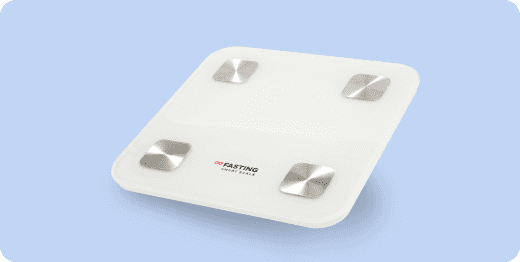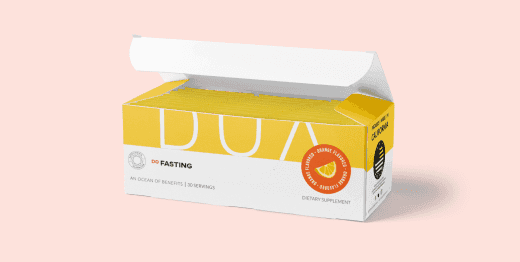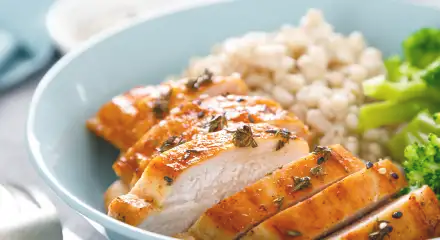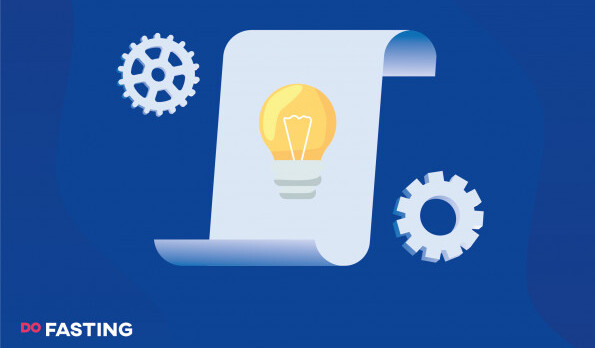Contents
What Is Anabolic Fasting?
Anabolic fasting is a type of intermittent fasting that includes the principles of the anabolic diet. The latter is a low-carb diet that alternates between periods of low-carb and high-carb meals.
In essence, anabolic fasting creates an environment for your body to cycle through muscle-building (perks of the anabolic diet) and fat-burning (perks of intermittent fasting) stages.
This approach was popularized by Dr. Mauro DiPasquale, a world-class powerlifter and a medical professional, with the release of his book called “The Anabolic Diet”. When the book was published, it was marketed toward bodybuilders and strength athletes. Its aim was to teach how to gain lean muscle mass, increase strength, and lose body fat, all with the help of a low-carb diet.
Recently, the anabolic diet found its way into the intermittent fasting sphere. Interestingly, the terms “anabolic” and “fasting” seem somewhat contradictory. An anabolic state refers to a process of growth during which you grow and repair muscle. In contrast, when your body enters the fasting state, it promotes fat burning and may even lead to muscle loss.
Take a
1-minute quiz
and discover how much weight you can lose with DoFasting!
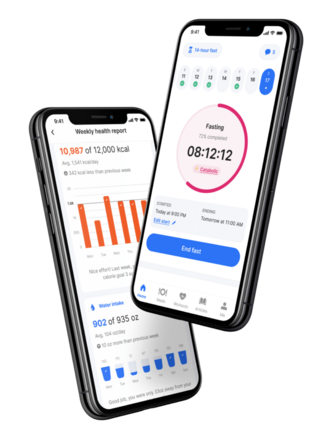
Science and research behind anabolic fasting
There are no studies on anabolic fasting. The research done on the anabolic diet and intermittent fasting individually is limited, but shows promise in promoting weight loss, boosting athletic performance, and even improving overall health.
While it’s generally considered safe, it’s important to note that anabolic fasting is more of an advanced eating pattern, meaning it won’t be a good fit for everyone.
Anabolic fasting vs. 16/8 fasting
If you’ve been involved in the intermittent fasting community for a while, you might have noticed that anabolic fasting is similar to the 16/8 fasting method.
What is 16/8 fasting? This approach consists of an 8-hour eating window and a 16-hour fasting period. Much like anabolic fasting, it’s an advanced type of fasting that’s not recommended for beginners.
Since its eating window is much shorter, you spend more time in a fasted state which brings even more health benefits.
Anabolic fasting and 16/8 fasting are similar in that they both have an 8-hour eating period and a 16-hour fasting window. However, anabolic fasting goes a step further and provides you with a 5/2 meal plan, whereas the 16/8 fasting type allows you to eat what you want.
Whether it’s anabolic fasting, 16/8 fasting, or any other type of fasting, success relies on consistency. DoFasting offers a helping hand that will make it easier to keep yourself accountable and track your intermittent fasting journey via a mobile app.
Anabolic Fasting Rules
There are two components making up anabolic fasting—intermittent fasting and the anabolic diet.
The main principles of anabolic fasting can be summarized as follows:
- 16/8 fasting — you’ll spend 8 hours eating and 16 hours fasting.
- Carb cycling — you’ll switch between low-carb days and high-carb days.
Firstly, you will have to adopt a 16/8 hour eating schedule. This means you will have an 8-hour eating window and fast for the remaining 16 hours. As mentioned earlier, the 16/8 method is an advanced fasting type; therefore, you should consider trying it separately before incorporating the anabolic diet.
TIP: If you feel that the 16/8 hour fasting pattern is too restrictive, feel free to change it. Other popular types of fasting include the 14/10 and 12/12 types, which are more suitable for beginners.
Regarding the anabolic diet, you’ll also have a regime to follow. One cycle of the anabolic diet takes one week—5 low-carb days and 2 high-carb days. This means that for 5 days straight, you’ll be abstaining from carbs (no more than 25 grams). Your primary energy sources during low-carb days will be healthy fats and protein.
The following high-carb days are when you up your carb intake. You should aim to get most of your calories from carbohydrates, although, you can still consume fats and protein in small amounts.
TIP: For the best results, limit your carb intake for 12 days before trying anabolic fasting. This will help your body properly adjust to using fat instead of carbs as its primary energy source.
Foods To Eat During Anabolic Fasting
Anabolic fasting does not rely on extreme calorie restriction, which means you can tailor your portions based on your personal needs. What’s important is that your plate contains all of the essential nutrients necessary for a healthy body.
As previously mentioned, your low-carb days will primarily consist of healthy fats and protein. Here are some nutritious food examples that you can incorporate into your meal plan:
High-fat foods to eat during low-carb days:
- Vegetable oils (olive, sunflower, or corn)
- Nuts
- Tofu
- Avocados
- Cheese
- Eggs
Protein-rich foods to eat during low-carb days:
- Red meats (like beef, pork, or lamb)
- Poultry (like chicken, turkey, or duck)
- Fish
- Legumes
The remaining 2 days will be spent eating high-carb foods with little to no fat.
High-carb foods to eat during high-carb days:
- Fruits
- Vegetables
- Different types of bread
- Pasta
- Oats
Once you’ve had your last meal of the day, make sure to abstain from calories for the entirety of the fasting period. Aside from food, this also includes sugary beverages like a cup of latte, juice, or soda. Instead, opt for fasting-safe beverages like unsweetened black coffee, tea, and, of course, water.
Foods To Avoid During Anabolic Fasting
As a general rule, it’s best to avoid highly processed foods when it comes to getting your macronutrients—junk food like chips, cookies, sweets, and soda should definitely stay out of your grocery list. But what should you avoid when it comes to carbohydrates, protein, and fats?
Avoid refined carbohydrates such as:
- White bread
- White rice
- Breakfast cereals
- Pizza
- Store-bought sauces and salad dressings
Saturated fats and trans fats are considered to be “bad” fats to avoid due to their high-fat content. They include:
- Margarine
- French fries
- Chicken nuggets
- Palm and coconut oils
When it comes down to protein to avoid, you should steer clear of heavily processed sources of protein like:
- Flavored yogurt
- Sausage
- Ham
- Bacon
- Beef jerky
- Other sliced meats
Simply put, try to eliminate all types of processed foods from your diet. Processed foods are loaded with added sugars and artificial flavorings, which can have addictive effects and make your weight loss goals more difficult to achieve. Moreover, processed foods have been linked to an increased risk of cancer.
Take a
1-minute quiz
and discover how much weight you can lose with DoFasting!

Benefits of Anabolic Fasting
With the intermittent fasting aspect of anabolic fasting, you’ll be on the receiving end of numerous benefits, such as a slower aging process, reduced inflammation, and better gut health.
Fasting for over 12 hours can put you into ketosis, which triggers the fat-burning process in your body and, when combined with a caloric deficit, promotes weight loss.This makes fasting a popular choice among individuals trying to lose weight without extreme dieting.
Another important aspect of IF is the improvement in metabolic health by increasing insulin sensitivity.
In contrast, the anabolic diet focuses specifically on muscle growth and body fat loss. It’s an effective way to gain muscle (and burn fat) without relying on steroids. Additionally, the anabolic diet can help you lose fat without sacrificing lean muscle mass. It also promotes strength and endurance.
Risks To Consider
When done correctly, anabolic fasting offers many benefits, particularly when it comes to building lean muscle mass and losing body fat. This does not mean that anabolic fasting is without drawbacks.
Anabolic fasting is considered an advanced type of intermittent fasting that’s not suitable for everyone. People who should avoid anabolic fasting (or any type of fasting) include:
- Children under 18 years old
- Pregnant or breastfeeding individuals
- Diabetics
- Insomniacs
- Those with a history of eating disorders
It’s important to note that anabolic fasting should not be done for more than a couple of weeks. Abstaining from an entire macronutrient group for prolonged periods can result in serious deficiencies.
If you have any health concerns, consult with a medical professional before making any changes to your diet.
Tips for Getting Started With Anabolic Fasting
Adopting intermittent fasting can be challenging, especially for beginners. When combined with a restrictive diet, the rules, eating schedules, and time constraints can even feel overwhelming. Start practicing anabolic fasting and stick to it with these 4 simple tips.
Plan your meals
Anabolic fasting means you will have a tight schedule all around. Why not go a step further and plan your meals? This will help you avoid unnecessary stress and will keep you on top of your game.
Planning your meals will help you make healthier food choices and save both money and time. Most importantly, it will help you control your unhealthy eating habits such as warming up pre-made meals or ordering take-out because you’re too tired to think of something to eat.
TIP: Before shopping for more ingredients, check what you have left in the fridge and choose your recipes accordingly. This practice will help reduce food waste.
Don’t overcomplicate things—DoFasting makes meal planning easy and offers a variety of healthy recipes that you can make during your eating hours.
Focus on your macronutrients
Macronutrients, such as protein, fat, and carbohydrates, should comprise a significant portion of your daily meals. Anabolic fasting, however, restricts your intake of an entire macronutrient group. To avoid deficiencies, it’s essential to ensure you’re getting enough high-quality carbohydrates during your high-carb days.
Focus on getting your macronutrients from healthy sources and try to stay away from processed foods. Instead of relying solely on motivation to stay disciplined, use meal planning and preparation to help ensure you’re getting your macronutrients from nutritious sources.
Consume enough electrolytes
Our bodies lose fluid while fasting, and along with it, depleted electrolytes. If not replenished, an electrolyte imbalance can lead to fatigue and fasting headaches.
You can replenish your electrolytes by drinking plenty of water. In fact, you should drink more water than you normally would, since about 20% of your fluid intake comes from food (which you will be abstaining from).
Aside from regular water, you can also consider electrolyte water, which is packed with electrolytes and makes an excellent addition to your fasting window.
Please note that some electrolyte water brands have added sugars that will break your fast. Before making a purchase, make sure that your bottle of electrolyte water is calorie-free.
Take it slow and listen to your body
If you’re new to fasting, give yourself time to get used to your new routine—it can take up to 4 weeks for your body to get used to this new habit. You will definitely have some setbacks during this time, so it is crucial that you set your expectations accordingly.
Most importantly, listen to your body. If you feel that something is wrong, stop fasting immediately and have something to eat—anabolic fasting may not be for you, and that’s okay. Don’t be afraid to experiment with other fasting types until you find your perfect fit.
Take a
1-minute quiz
and discover how much weight you can lose with DoFasting!

Anabolic Fasting: Final Thoughts
Anabolic fasting is an eating pattern popular among bodybuilders and those who are trying to build muscle. It combines a carb cycling diet with intermittent fasting to increase both muscle gain and body fat loss.
Both intermittent fasting and the anabolic diet are highly restrictive, making anabolic fasting quite difficult to pull off. Before diving into anabolic fasting, make sure to do your research and prepare yourself both mentally and physically.
See how DoFasting will improve your life
Find out what works for you with this 60-sec quiz approved by our experts and get your personal revolutionary fasting assistant.
Start the Quiz

